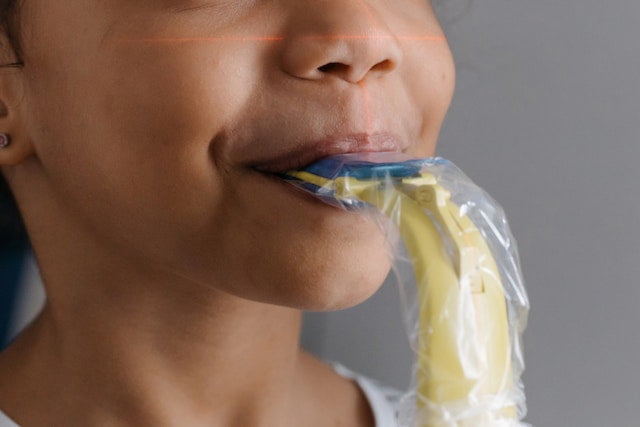Okay, listen—parenting’s a wild ride, isn’t it?
One minute you’re dealing with tantrums over veggies, the next you’re wondering if that toothpaste is actually protecting your kid’s teeth from all the hidden sugars in their snacks.
I’ve been down this road myself, chatting with other parents at playgrounds and digging into what the experts say, and fluoride keeps coming up as this quiet superstar.
Um, it’s not some fancy new trend; it’s been around forever, but it really shines when it comes to keeping those baby teeth strong and warding off cavities before they become a big headache.
Let me share what I’ve gathered, mixing in a couple stories from folks I know, so this doesn’t feel like a boring textbook read.
We’ll hit how it works, the upsides, safe ways to use it, and yeah, those nagging risks too—because who doesn’t overthink this stuff?

So, What’s Fluoride Doing for Those Little Chompers Anyway?
Kids’ teeth? They’re not built like ours—thinner enamel, more vulnerable to everything from apple juice to birthday cake crumbs.
Fluoride swoops in like that reliable friend who always has your back, basically rebuilding and beefing up the tooth surface so acids from bacteria don’t eat away at it.
- It grabs onto weak spots and pumps in minerals, turning soft areas tough against decay—kinda like sealing cracks in a driveway before winter hits.
- If it’s in the water or supplements, it sneaks into teeth as they’re forming, making them sturdier from day one.
- Slather it on with toothpaste or a dentist’s gel, and it throws up a quick barrier that fights the daily grind of munching and sipping.
You know, a mom from my kid’s school swore by it after her son avoided a bunch of fillings; she said it was like giving his teeth superpowers without any extra effort. Makes you think, right?
Small habits adding up big time.
Also read The Difference Between Pediatric Dentist and General Dentist
The Real Wins: Why Fluoride Matters for Kids’ Smiles

Don’t get me wrong—it’s not a cure-all, but man, the benefits stack up, especially for little ones who forget to brush or love their gummy bears a bit too much.
From what I’ve heard and read, it’s like an insurance policy against dental drama.
- Cuts Down Cavities Big Time: Stuff I’ve seen says it can slash decay risks by 20-40% in children, super clutch for families where dentist trips aren’t always easy.
- Toughens Up Enamel: Helps those developing teeth stand strong, dodging early wear that could lead to sensitivity or worse down the road.
- Saves Your Wallet and Sanity: Areas with it in the water have way fewer dental issues, meaning less “open wide” stress and more cash for fun outings.
- Bonus for Tricky Situations: Kids with special needs or health hiccups get that extra shield, making oral care less of a battle.
I remember venting to a dad at a playdate about my daughter’s brushing battles—he laughed and said switching to fluoride stuff turned things around for his twins.
It’s those shared “aha” moments that stick with you.
Getting It Right: Simple Guidelines for Fluoride with Your Kids
Ah, the how-to part— this is where I always second-guess myself. The key?
Age matters a ton, and it’s all about not overdoing it while getting enough to do the job. Here’s what pros suggest, broken down easy.
- Tiny Babies (Under 6 Months): Skip the supplements; breast milk or regular formula is fine, no paste needed till teeth show up.
- 6 Months to 3 Years Old: Dab on just a rice-sized bit of fluoride toothpaste morning and night—watch like a hawk so they spit, not swallow.
- 3 to 6 Crew: Pea-sized dollop now, still supervise the fun; if cavities run in the family, ask about a quick varnish at checkups.
- Big Kids (6 and Up): They can go full amount, maybe add a rinse; factor in your local water to avoid doubling up.
- Quick Hack: Test your tap water’s levels—it’s a game-changer if you’re in a spot without natural fluoride.
Balance is everything, like not letting screen time take over dinner. Nail this, and it’s smooth sailing.
Watch Outs: Risks and How to Sidestep Them
No sugarcoating it—fluoride’s great, but push it too far, and there could be hiccups, especially while those permanent teeth are brewing under the gums.
- Those White Spots (Fluorosis): From too much as a tot, it leaves cosmetic marks; totally avoidable if you stick to the script.
- Tummy Troubles from Swallowing: Happens if kids gulp paste like candy, but hey, teaching them to spit early fixes that.
- Easy Dodges: Grab a home water test, pick age-right products, and if something feels off, loop in the dentist pronto.
Most times, it’s all good—the benefits crush any worries. A parent I know freaked out over spots but relaxed after tweaking their routine; no big deal in the end.
Wrapping This Up: Fluoride’s Your Secret Weapon for Happy Kid Smiles
Look, at the heart of it, fluoride’s that behind-the-scenes helper in pediatric dental health, shielding baby teeth from chaos and setting up solid foundations for the grown-up ones.
Weave it into daily life with the right toothpaste, water checks, or pro boosts, and the research backs it up as a smart move.
If you’re like me and overanalyze everything, just start with a chat at your next dental visit—it’s reassuring.
Because really, watching your kid beam with confidence? That’s the win we’re all chasing.
Also read How to Teach Children Proper Oral Hygiene Habits?
Frequently Asked Questions About Fluoride in Pediatric Dental Health
Drawing from common questions parents ask (like those popping up in search results), here are some quick answers to clear things up.
Is fluoride safe for children?
Absolutely, when used in recommended amounts—it’s been a go-to for decades to prevent cavities without issues for most kids.
How much fluoride does a child need?
It varies by age: infants need none extra, toddlers a tiny smear, and older kids a pea-sized bit; check water sources to avoid overkill.
What are the benefits of fluoride for kids’ teeth?
It strengthens enamel, cuts cavity risks by up to 40%, and supports healthy development, especially in high-sugar diets.
Can too much fluoride harm my child?
Yes, excess can cause fluorosis (white spots on teeth), but it’s rare and mild if you follow guidelines and monitor intake.
When should kids start using fluoride toothpaste?
As soon as the first tooth appears, around 6 months, with a rice-grain amount to build protection early.
Is fluoridated water enough for my child?
Often yes, but if levels are low, supplements or toothpaste fill the gap—test your water and consult a dentist.
Does fluoride help with baby teeth or just permanent ones?
Both! It protects baby teeth from decay and strengthens emerging permanent teeth underneath.
Are there natural alternatives to fluoride?
Options like xylitol or herbal rinses exist, but they’re not as proven; fluoride’s still the gold standard for cavity prevention.
How often should kids get professional fluoride treatments?
Typically 2-4 times a year for high-risk kids, like those with past cavities—your dentist can tailor it.
What if my child swallows fluoride toothpaste?
A little is okay, but supervise to encourage spitting; chronic swallowing could lead to fluorosis, so teach the habit early.
References
https://www.aapd.org/resources/parent/faq/
https://www.cdc.gov/fluoridation/index.html
https://www.mayoclinic.org/healthy-lifestyle/infant-and-toddler-health/expert-answers/fluoride/faq-20058269
https://www.ada.org/resources/topics/fluoride
https://kidshealth.org/en/parents/fluoride-water.html

Dr. Mary G. Trice is a renowned pedodontist based in Queens, NY. With an unwavering dedication to children’s dental health. In addition to her clinical practice, Dr. Trice is the writer and manager behind the informative platform pediatricdentistinqueensny.com. Through this site, she offers valuable insights, tips, and resources for parents and guardians, aiming to bridge the gap between professional dental care and everyday oral hygiene practices at home.
